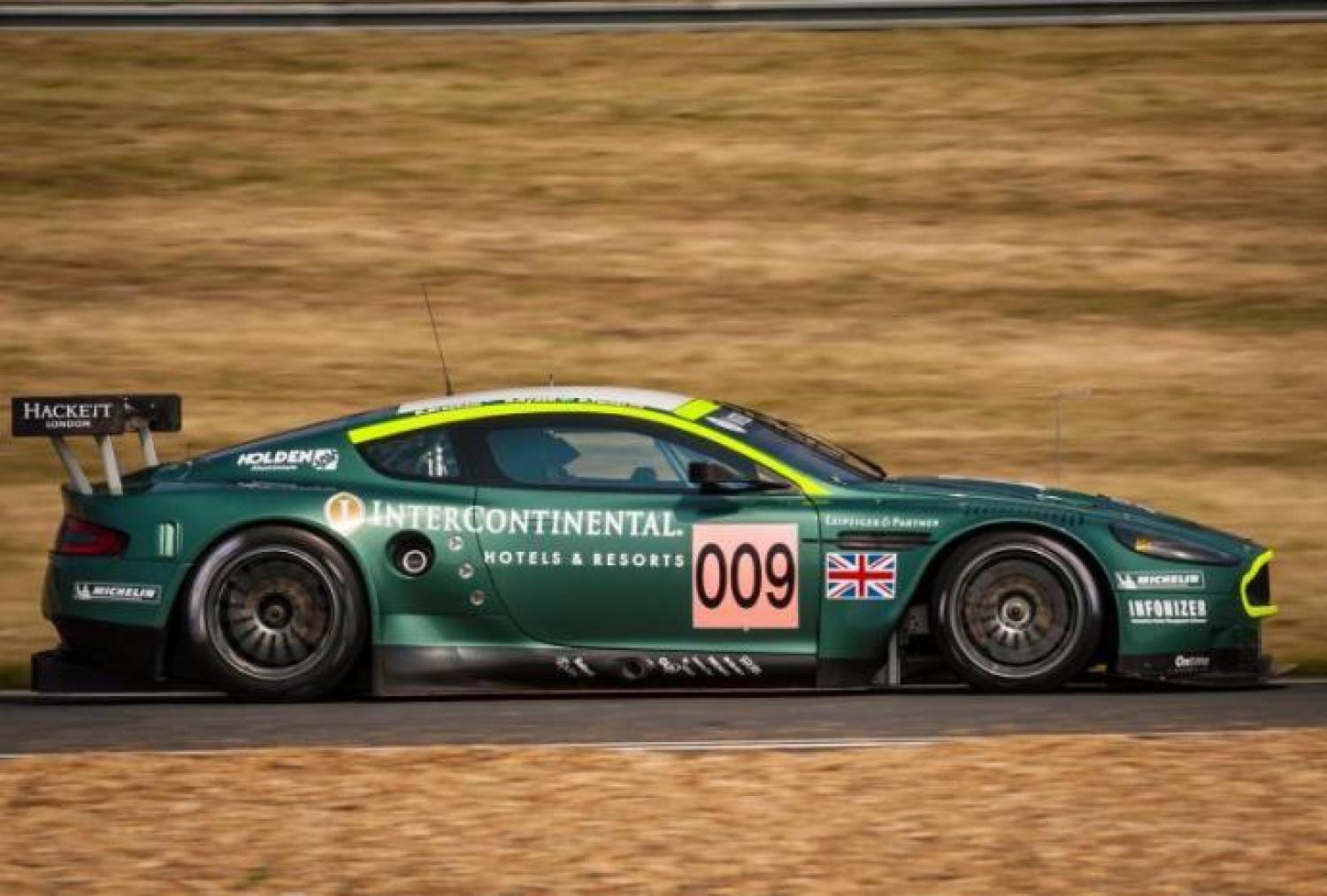
Photo : Pierre-Yves Riom / ACO
Designed, produced and developed by Prodrive to replace the Ferrari 550 GTS Maranello, the Aston Martin DBR-9 did not waste time in demonstrating its potential. As of its first race, the 2005 12 Hours of Sebring, Darren Turner, David Brabham and Stéphane Ortelli served Corvette Racing with a big reality check on their home turf. Doug Fehan's men would exact their revenge in La Sarthe, a few months later, where the DBR-9s endured mechanical issues born out of growing pains.
Galvanized by the potential shown in 2005, the Prodrive team entered the British car on all fronts as of its second year in competition. Three official outfits were to race the car with very precise goals in mind. Aston Martin Racing focused on the ALMS and the 24 Hours of Le Mans, Larbre Compétition entered a car in the Le Mans Series and the BMS Scuderia Italia participated in the FIA GT with two chassiss. The preceding year's performances were confirmed as Jack Leconte won the Le Mans Series title and Aston-Martin Racing won several ALMS races including Petit Le Mans. However, the success was not complete. Even though it was in the LM GT1 class, David Richards' men attempted another historic victory at the 24 Hours of Le Mans, 50 years after that of Carroll Shelby and Roy Salvadori at the wheel of the legendary DBR-1.
In 2007, the means used were identical to those of the previous season. Though the BMS Scuderia Italia (FIA GT) and Larbre Compétition (Le Mans Series) were beaten in their championships, the Aston Martin Racing team won at the 24 Hours of Le Mans with the driver line-up of David Brabham/Darren Turner/Rickard Rydell, still up against the formidable official Corvette C6-Rs.
With the LM P1 project in the can, Aston Martin Racing and Prodrive significantly reduced the scope of the official DBR-9's program in 2008. Then in Gulf oil company's famous colours, two chassis were entered by the factory at the 24 Hours of Le Mans where David Brabham, Antonio García and Darren Turner gave Georges Howard Chappell a second consecutive win. The development of the car having come to an end, the rest of the wonderful GT's career would unfold with private teams. All total, 11 outfits entered the DBR-9 chassis (initial version) from 2005 to 2010 with more or less success: Team Modena, Cirtek Racing, Jetalliance Racing, RaceAlliance, Phoenix Racing, Barwell Motorsports, Gigawave Motorsport, Bell Motorsports, Strakka Racing, Vitaphone Racing and Team Nova.
Summarizing the Aston Martin DBR-9's life would not be complete without mention of the 2010 and 2011 seasons of the FIA GT1 World Championship. Greatly modified for the new class regulations, the last DBR-9s were entered by Hexis AMR and Young Driver AMR as semi-official outfits. Since 2010, the historic adversary of the British manufacturer, Corvette Racing, has turned to the GTE class (ex-GT2) and the DBR-9s have gone up against Maserati MC12s and Ford GTs. This fantastic career came to an end with the third place of Young Driver AMR at the 2010 24 Hours of Le Mans (GT1) and a Champion Team title in the FIA GT1 World Championship for Hexis Racing in 2011.
Despite the large number of chassis made by Prodrive and the small number of cars official totaled in competition, the DBR-9s are hard to find for sale. Now the British car is no longer authorized to roll in any Grand Touring class and only historic events allow the 6.0L V12 to thunder. For a road-ready 2006 factory spec model, you're looking at the tidy some of 600,000 euros…the dream and the record come at a premium!
Pierre-Yves Riom / ACO - Translation by Nikki Ehrhardt / ACO


